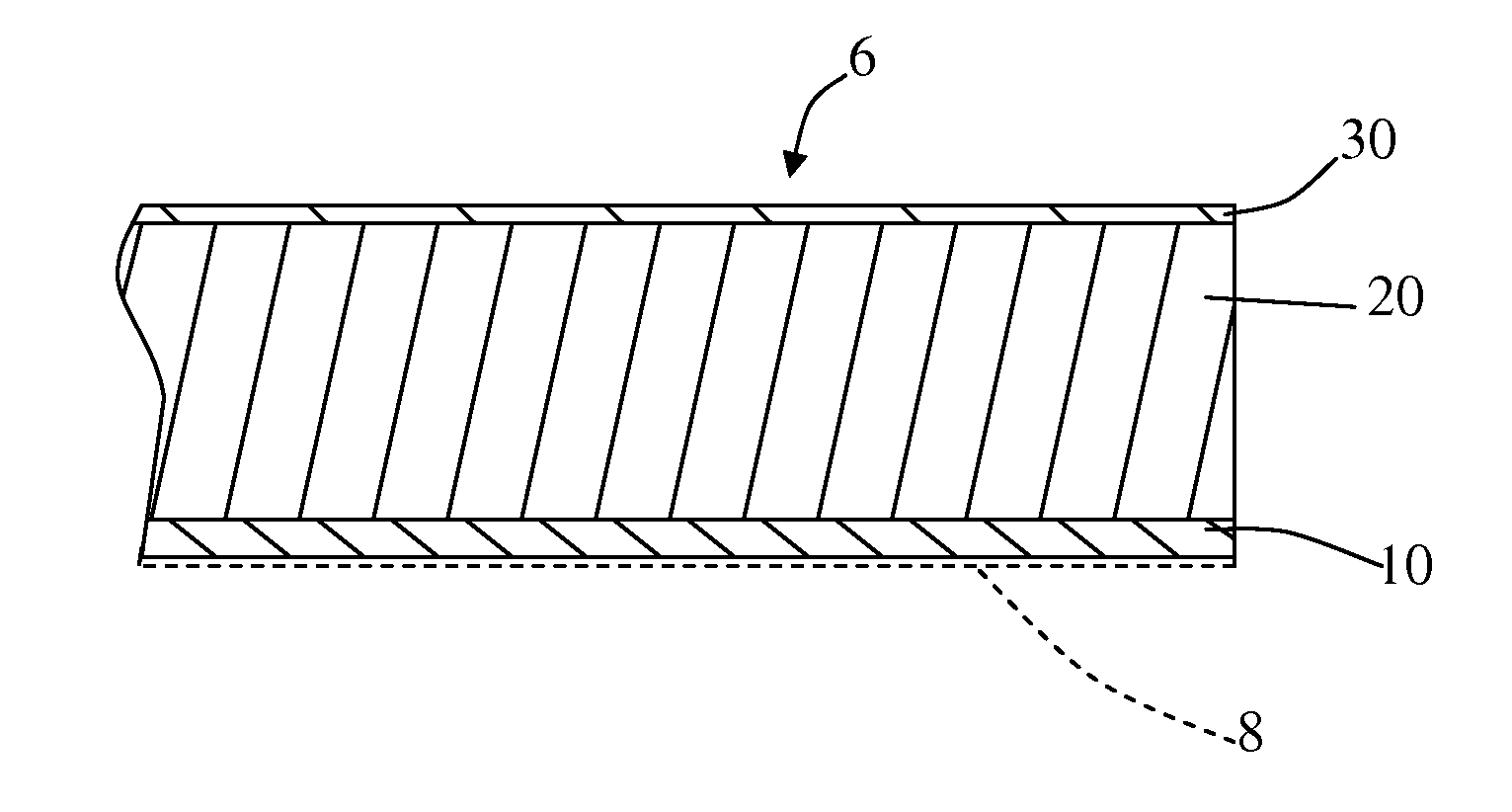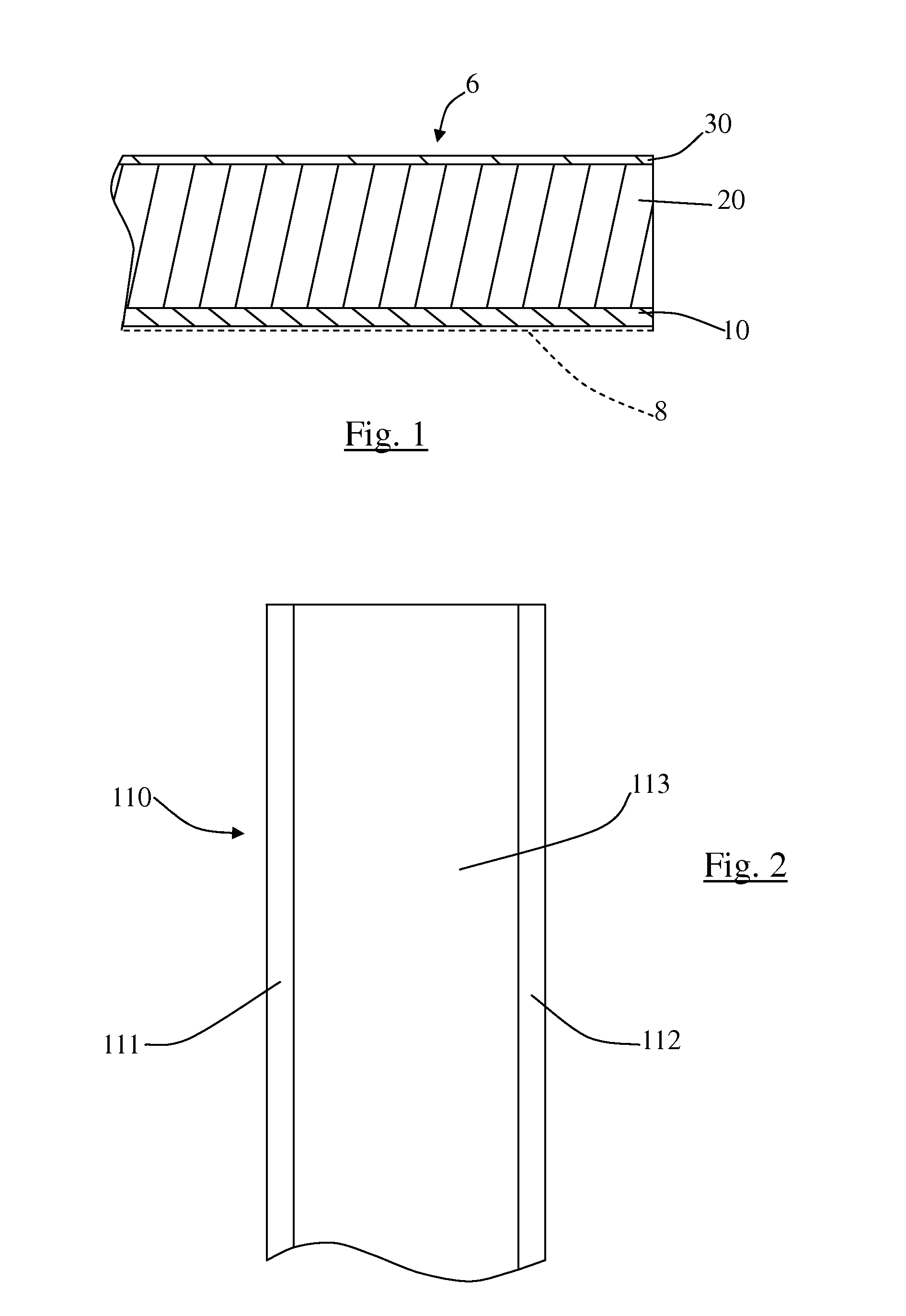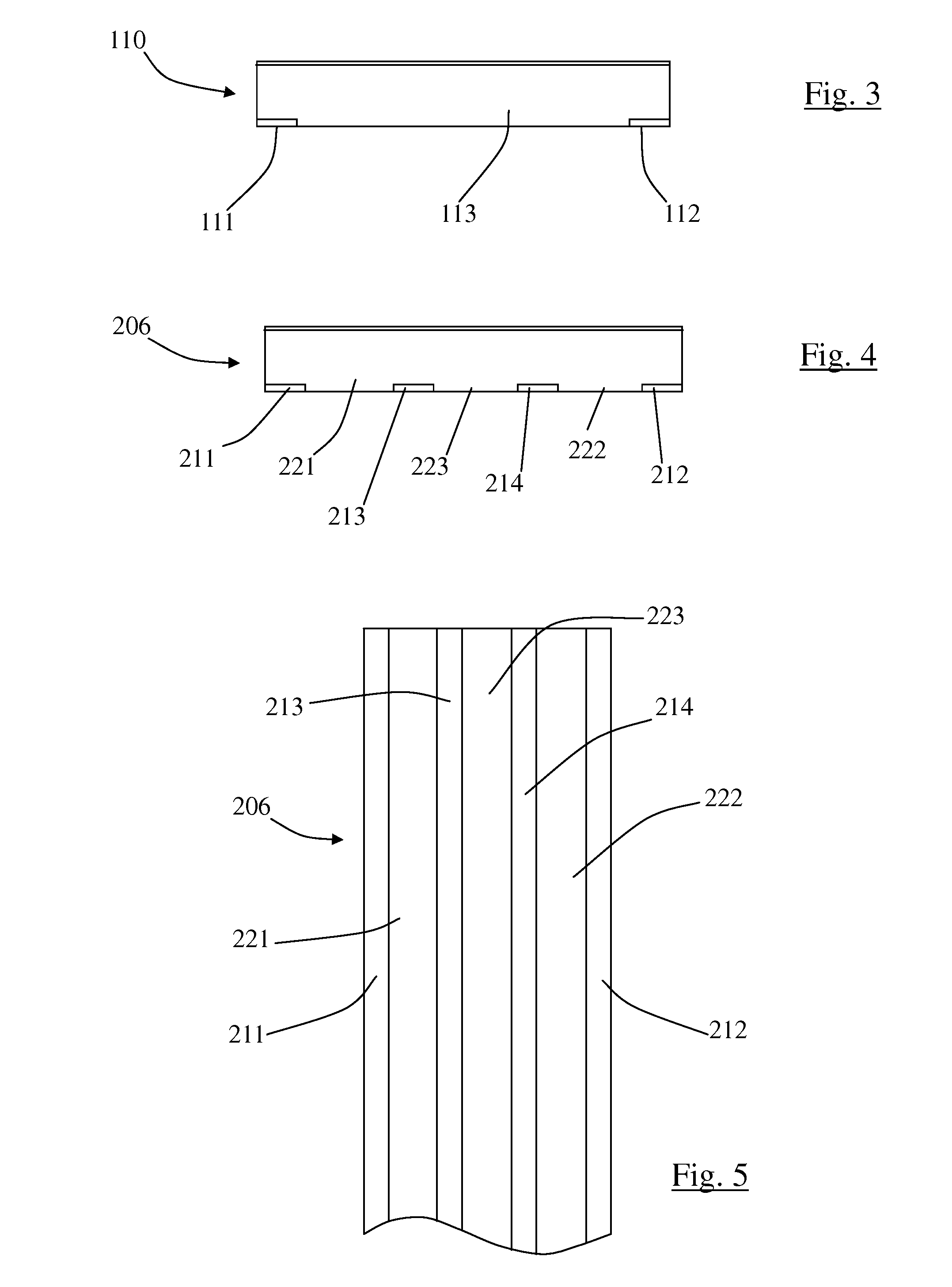Flashing and waterproofing membrane
a waterproofing and flashing technology, applied in the field of self-adhesive laminates, can solve the problems of wind-driven rain, damage and infestation, building expansion and contraction, and inability to meet the needs of use, and achieve the effects of reducing the number of flanges, and ensuring the adhesion
- Summary
- Abstract
- Description
- Claims
- Application Information
AI Technical Summary
Benefits of technology
Problems solved by technology
Method used
Image
Examples
Embodiment Construction
[0024]The preferred laminate tape 6 is shown in FIG. 1 having a first layer 10, a second layer 20 and a third layer 30. The layers 10, 20 and 30 are attached together in a manner that renders each layer substantially non-removable from the other layers. This is preferably due to the tacky nature of the first and second layers, but can be due to special adhesives interposed between the layers.
[0025]In the preferred embodiment of the invention, the first layer 10 is a thin adhesive layer that is preferably formed in a hot-melt process by applying a liquefied material to a release liner 8 (illustrated in phantom) as described below. The release liner 8 is a conventional paper or polymer film that is coated on at least one major surface with a release agent that provides a weak bond between the liner and a sticky material, such as adhesive or mastic, but ready separation of the liner from the sticky material. The second layer 20 is preferably a thicker rubberized asphalt material that i...
PUM
| Property | Measurement | Unit |
|---|---|---|
| thickness | aaaaa | aaaaa |
| thickness | aaaaa | aaaaa |
| thickness | aaaaa | aaaaa |
Abstract
Description
Claims
Application Information
 Login to View More
Login to View More - R&D
- Intellectual Property
- Life Sciences
- Materials
- Tech Scout
- Unparalleled Data Quality
- Higher Quality Content
- 60% Fewer Hallucinations
Browse by: Latest US Patents, China's latest patents, Technical Efficacy Thesaurus, Application Domain, Technology Topic, Popular Technical Reports.
© 2025 PatSnap. All rights reserved.Legal|Privacy policy|Modern Slavery Act Transparency Statement|Sitemap|About US| Contact US: help@patsnap.com



